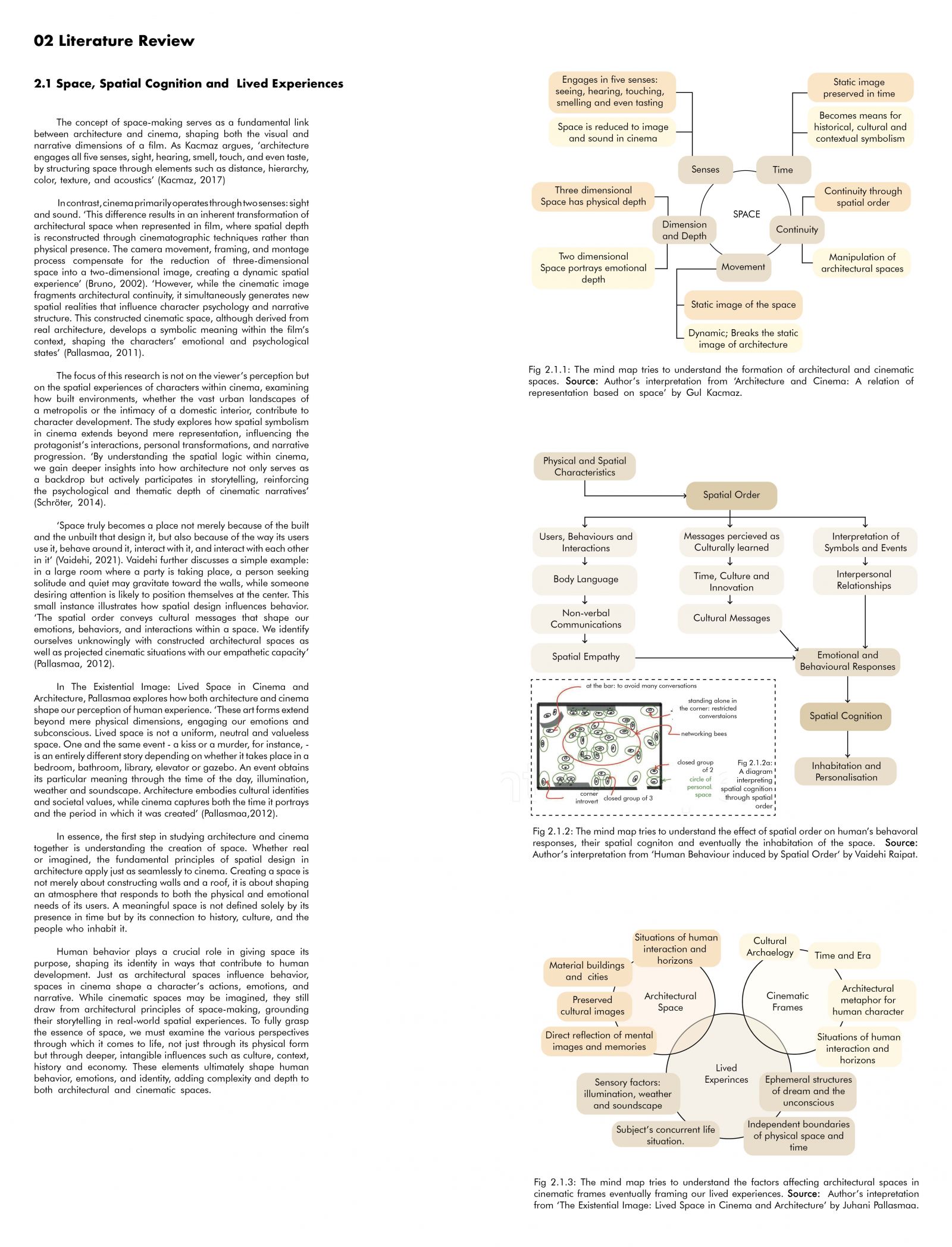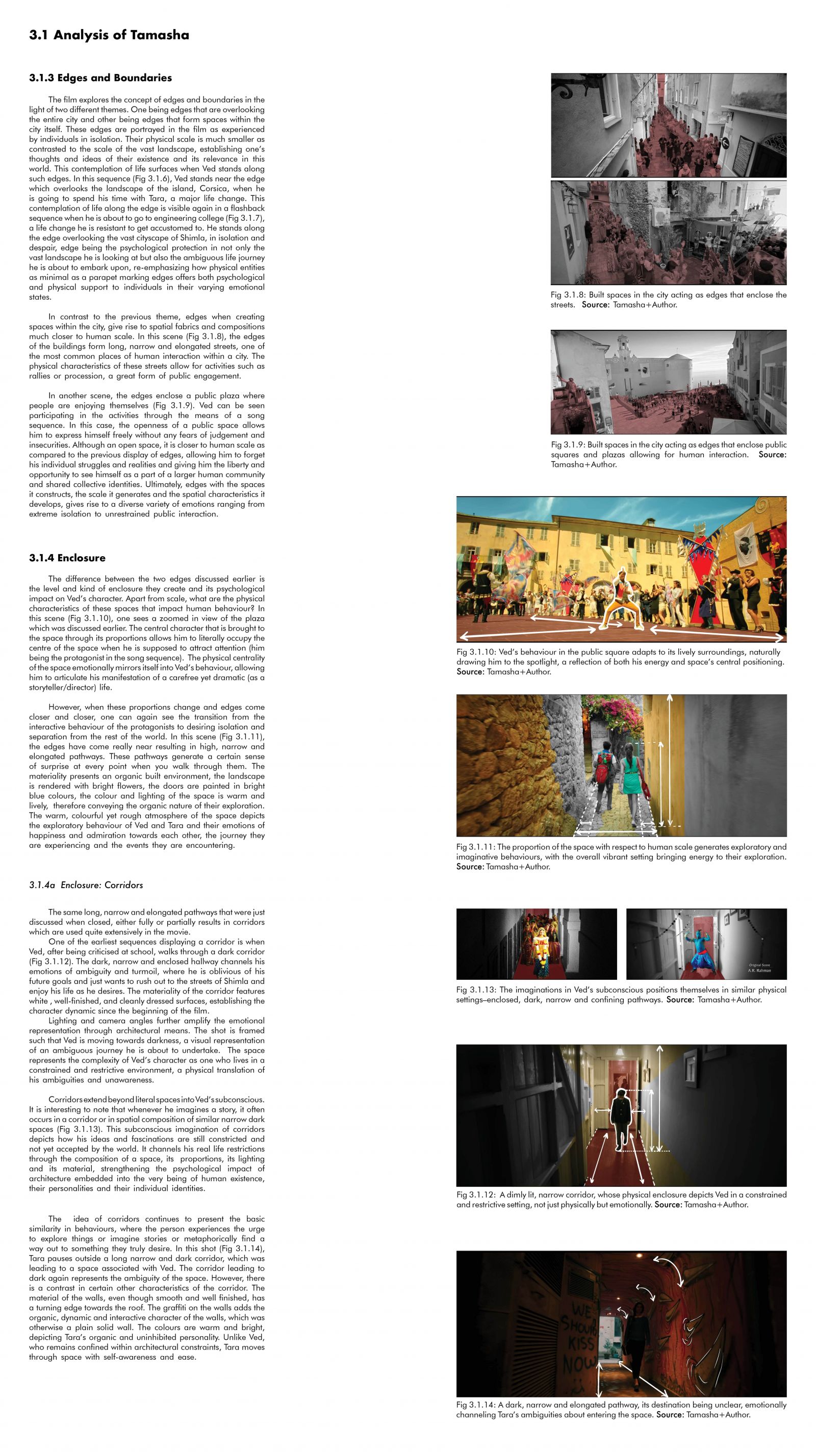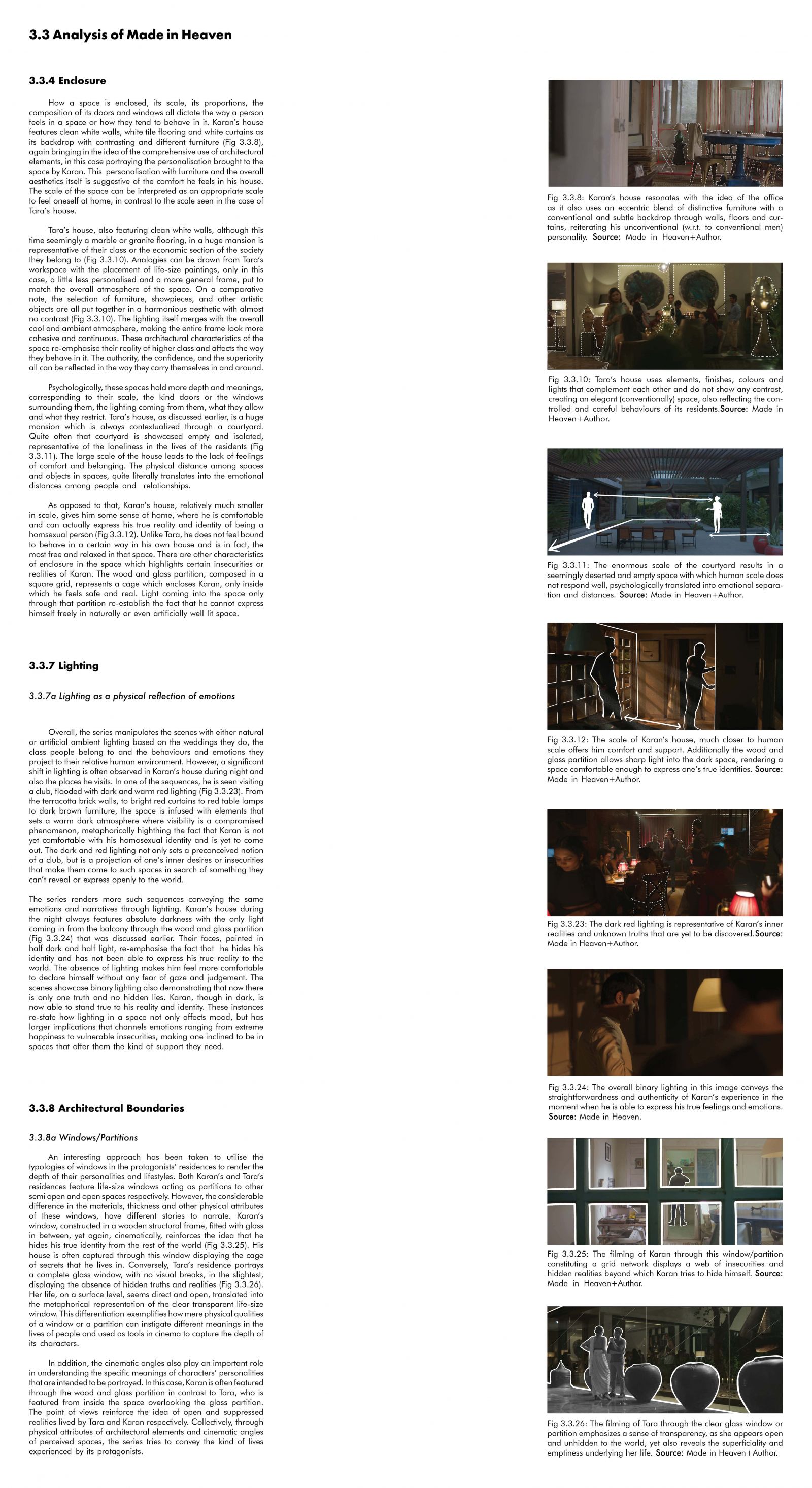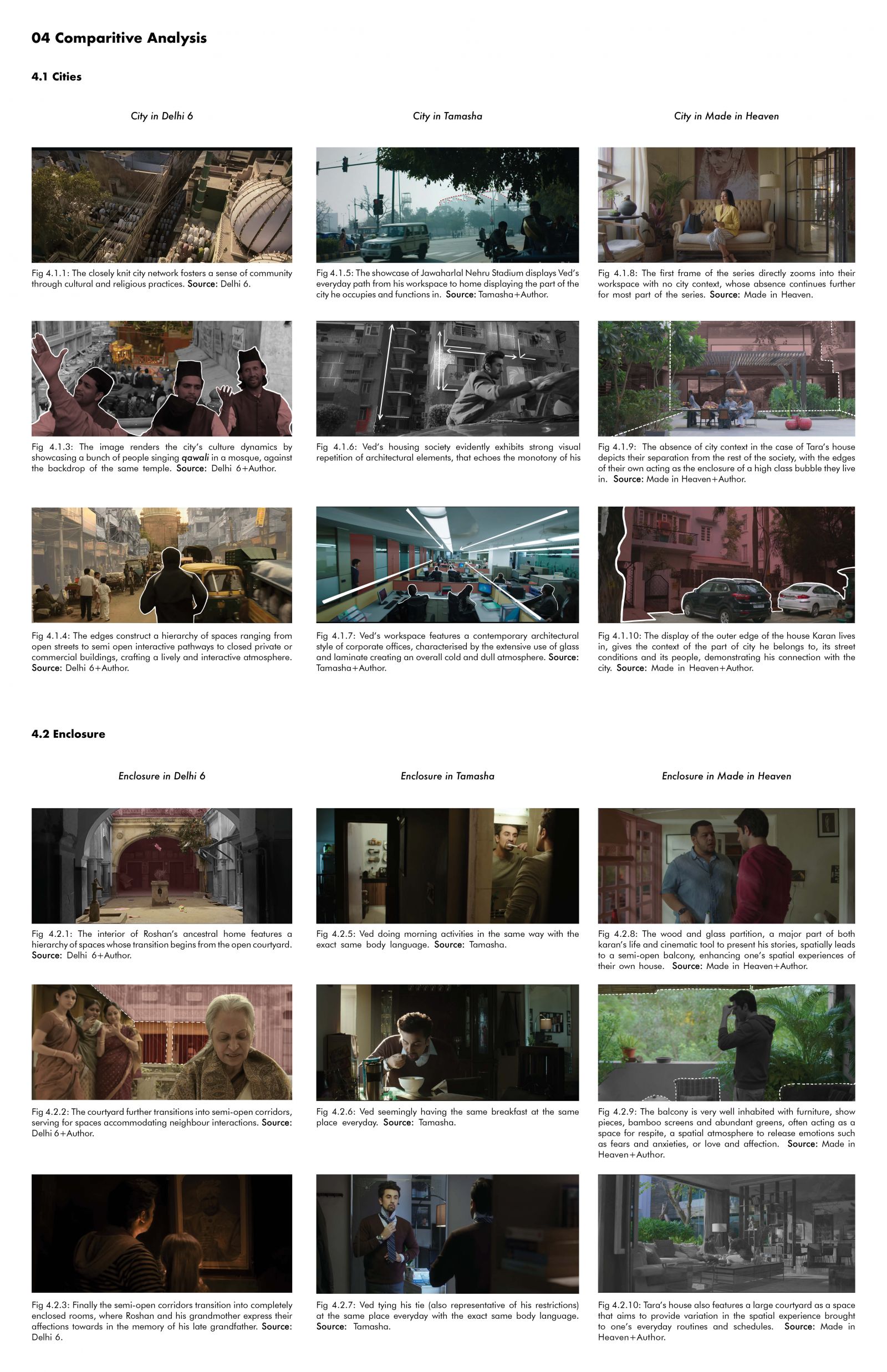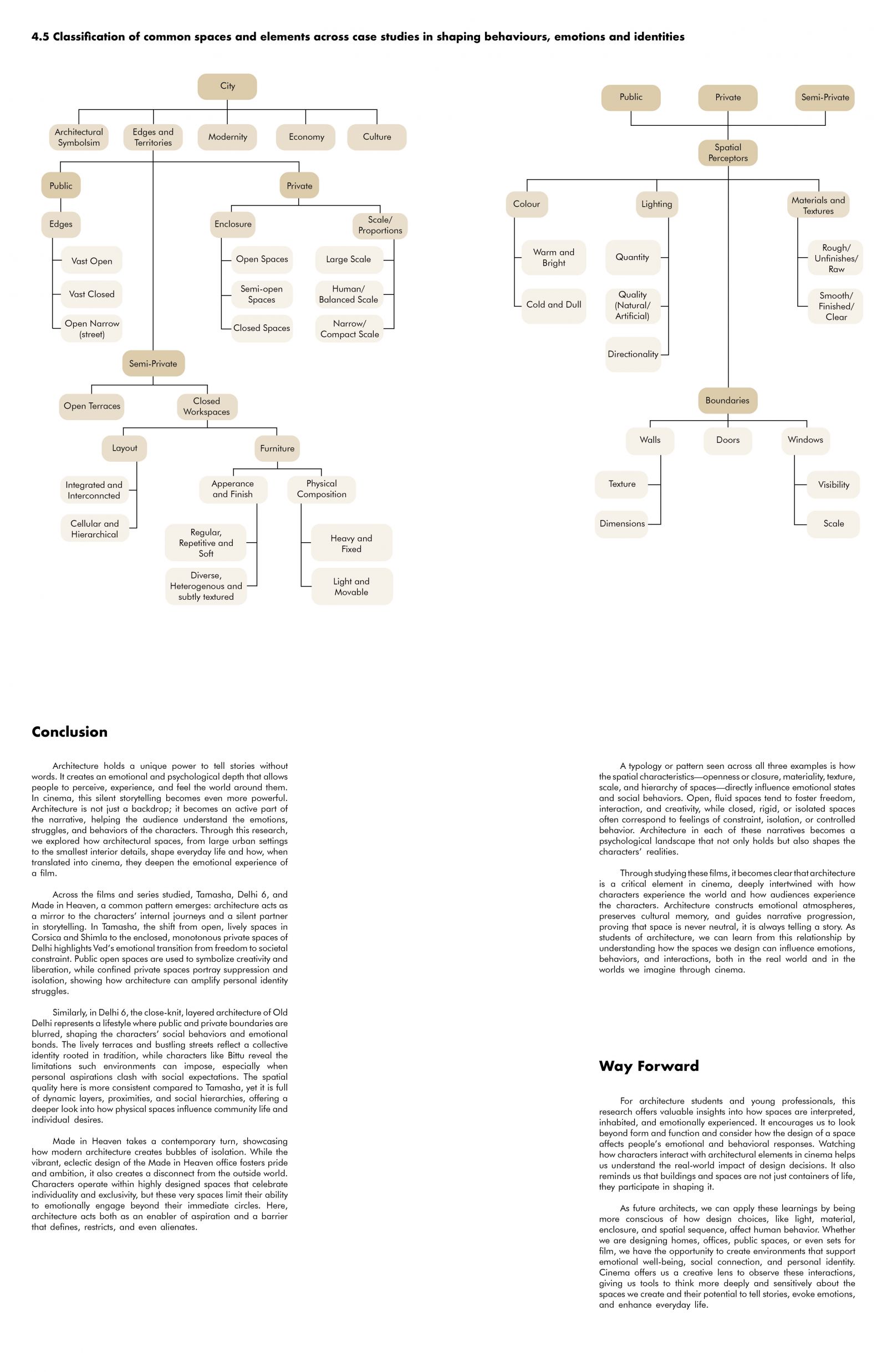Your browser is out-of-date!
For a richer surfing experience on our website, please update your browser. Update my browser now!
For a richer surfing experience on our website, please update your browser. Update my browser now!
Humans develop cognition towards a space and it stays in their memories which gradually affects the way they behave and interact with others in a particular setting. Cinema uses these settings, which can also be referred to as the built environment to depict the nature of the story they want to portray and the kind of characters they want to explore. These settings are based on various factors such as history, culture, heritage, economy and some more tangible aspects of architecture that directly affect human behaviour and emotions. Both forms of art define qualities and essences of existential space; they create experiential settings and frames for situations of life.’ Our mental space is entangled with the physical space which shapes our behaviour towards ourselves as well as towards others. Architecture in many ways affects how we behave, with strong ideas of lines, geometry, colour, contrast, material, scale and much more. Apart from its physical characteristics, there are other factors such as, economy, culture and heritage that not only affect Architecture itself but also the people existing or inhabiting that space. Cinema, in its deepest form often tries to explore the entangled complexities in the lives and mental space of the portrayed characters. Architecture becomes a major tool in Cinema which is used to show these complexities, aspirations and desires of life along with other emotional engagement with the built environment. Overall, this research will explore these various characteristics of Architecture as well as Cinema that go way beyond mere aesthetics and visual appeals and delve deeper into the feelings and emotions associated with a particular space. It will eventually explore how the interplay between architecture and the built environment in cinema influences the portrayal of human behaviour, emotions, and identity, and what role do cultural, historical, and economic factors play in shaping these depictions.

